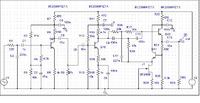Hello!
I don`t know if this is the right forum for my question, if not, please move it.
Well, I have a wireless current flow detector. Just today I placed it against the wall and it detected the flow of current (it lit up) over almost the entire wall. There is an electricity meter on this wall, although I don`t think it`s his fault because I checked it about 2 m from the meter and in places where I`m sure there are no wires running through it. The sensor is definitely working. And with this sensor it`s hard to detect the flow of current in the wire. already 2 cm and there is only brick in the wall and it detects it.
What could it be? I`m asking for help because I`m very curious about this and I`m asking for a rational solution to this phenomenon. Best regards and thank you in advance for all your help
I don`t know if this is the right forum for my question, if not, please move it.
Well, I have a wireless current flow detector. Just today I placed it against the wall and it detected the flow of current (it lit up) over almost the entire wall. There is an electricity meter on this wall, although I don`t think it`s his fault because I checked it about 2 m from the meter and in places where I`m sure there are no wires running through it. The sensor is definitely working. And with this sensor it`s hard to detect the flow of current in the wire. already 2 cm and there is only brick in the wall and it detects it.
What could it be? I`m asking for help because I`m very curious about this and I`m asking for a rational solution to this phenomenon. Best regards and thank you in advance for all your help



